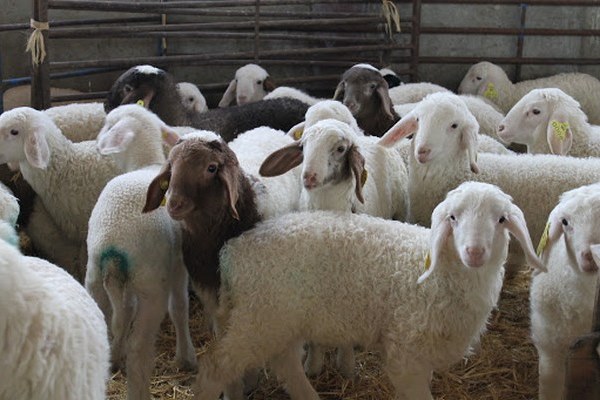
Assaf is a breed of domesticated sheep from Israel. The Assaf sheep is the product of crossbreeding the Awassi and East Friesian. The Assaf is a dual purpose breed, raised for both milk and meat. Both sexes display white and are unicolored.
The Assaf breed was developed by crossbreeding the Awassi, Israel’s native sheep bread and German East Friesian sheep.
The sheep are medium sized animals, mainly white in color with a white face. Both rams and ewes are generally polled.
Israeli sheep farmers have been improving the Awassi breed over the last 85 years.
In 1930, Awassi sheep produced an average of about 40 liters of milk per year. Through careful husbandry and feeding techniques in addition to genetic selection, Israeli famers have drastically increased that number; the new improved Awassi sheep now produce an average of 550 liters of milk per year.
The drawback of the Awassi is their rate of reproduction. Ewes typically lamb just once a year and usually give birth to just one lamb.
In 1955 researchers at the Israeli agricultural research farm, started the development project, aiming to improve the fertility of the Awassi by crossbreeding the improved Israeli Awassi, with the German East Friesian breed, known for both high milk production and high fertility, but not well-suited to the climatic conditions in Israel. They found that a combination of 3/8 East Friesian and 5/8 Awassi was the ideal combination for optimized vitality, milk production, and birth rate.
The new cross-bred, the Assaf, combines the positive qualities of the Awassi and East Friesian and produces an average of 450 liters of milk annually. Although slightly lower than that of the Awassi, their prolificacy is significantly higher with an average prolificacy of approximately 3 lambing’s in 2 years with an average of 1.6 lambs per lambing.
The Assaf are very hardy and strong animals, well adapted to their local climates and are raised and managed under an intensive production system in Israel (involving weaning lambs at birth, rearing them artificially and milking the ewes after parturition).
Demand for this breed is increasing every year. Along with the availability in its native area, the breed has also spread to other Mediterranean countries (Portugal and Spain) and has been exported as well to Chile, Peru and the United States.